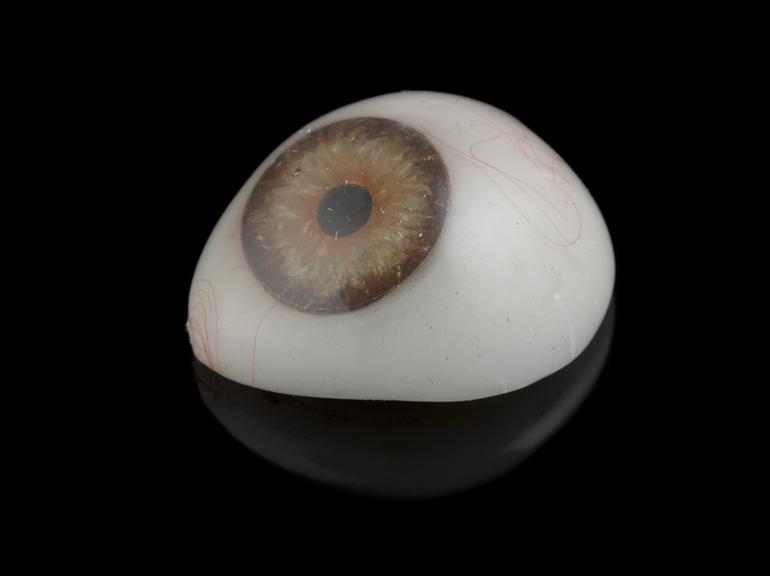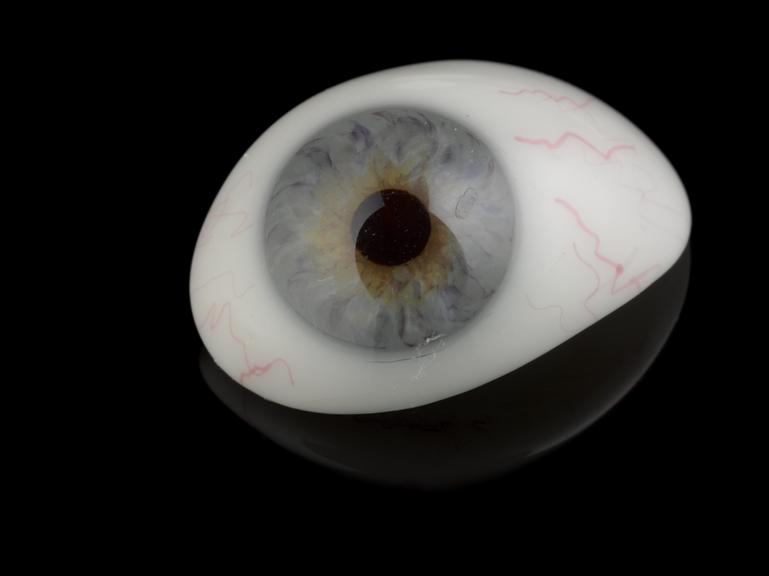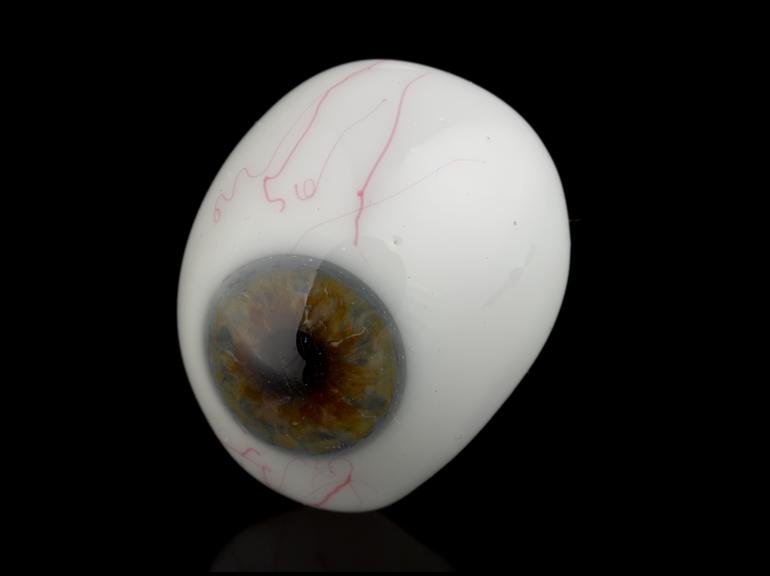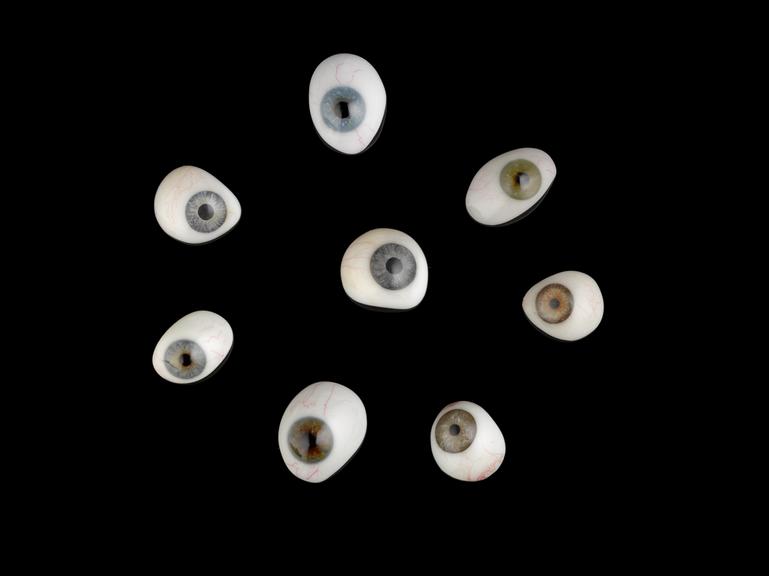Ocular prosthesis (artificial eye) referred to as stock or pre-made eyes of the 'reform' design
1890-1910











A collection of 200 artificial glass eyes (ocular prostheses), in a range of colours and shapes, referred to as stock or pre-made eyes of the 'reform' design as originally developed by Herman Snellen, probably made in England, c.1890-1910.
Created by a manufacturer in the early 1900s, this example is one from a set of 200. Selections of ocular prosthetics or artificial eyes like this one impressed potential customers with their intricate detail and helped them find the perfect match. Wearing an ocular prosthetic is and was an individual choice. Prior to the creation of the National Health Service in 1948, people would have to seek out a maker and purchase them, often making several trips over a lifetime for repair and maintenance.
Perhaps better known for his work in developing the Snellen type eye test which is still used Herman Snellen (1834-1908) was a Dutch ophthalmologist. Developed in the 1890s, his design of the “Reform-Auge” (“reform eye”) consisted of a double shell with a gap rather than the single shell design. Snellen’s design was aimed to help support the person's eye socket and to be more comfortable.
1890-1910
1890-1910
1890-1910
1890-1910
1890-1910
1890-1910
1890-1910
1890-1910
1890-1910
1890-1910
1890-1910
1890-1910
1890-1910
1890-1910
1890-1910
1890-1910
1890-1910
1890-1910
1890-1910
1890-1910
1890-1910
1890-1910
1890-1910
1890-1910
1890-1910










